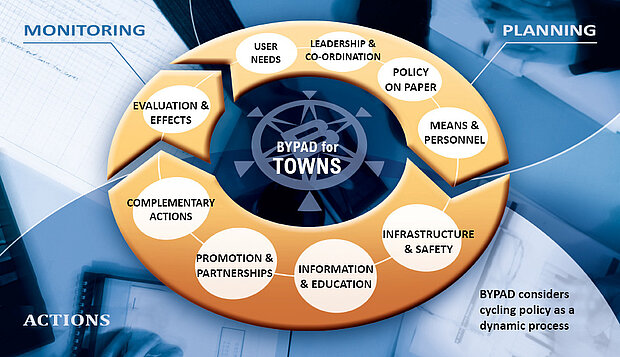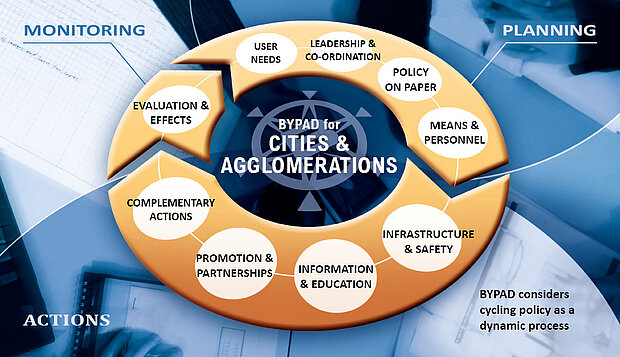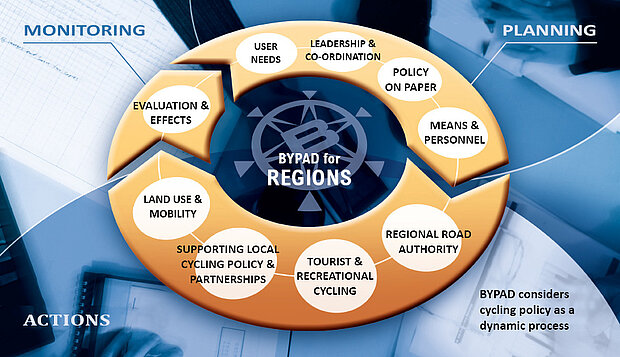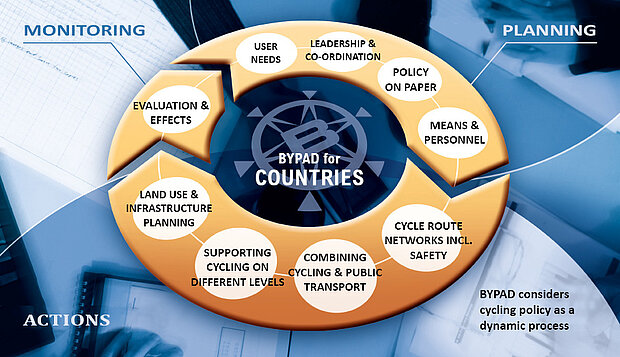Tailor-made Audits
250 cities, municipalities and regions from 27 countries have already seen the benefits of BYPAD and started to improve the quality of their cycling policies. The BYPAD method has been developed for four categories in terms of size and organisation of geographical areas:

BYPAD for Towns
Under towns we understand municipalities with a (limited) urban character. As a guide number, a town has less than 50,000 inhabitants, but this figure really varies from country to country. Concerning the administrative organisation, a town has a small administration where one or two persons are taken all tasks concerning cycling, transport, urban planning policy.

BYPAD for Cities and Agglomerations
Under cities and agglomerations we understand municipalities with a urban character. As a guide number, a city has above 50,000 inhabitants, but this figure really varies from country to country. Concerning the administrative organisation, a city has an administration where multiple persons working on the tasks concerning cycling, transport, urban planning policy.

BYPAD for Regions
Regions are the administrative level above the municipalities. Depending on the country we are speaking about provinces, regions, counties, … Normally there is an elected council who is running the region. Regions do have own responsibilities in infrastructure planning, transport planning, education, … The list of responsibilities differs from region to region. Regions are also important in supporting communities and local actors through funding, arguments, tools and knowledge.

BYPAD for Countries
States have the legislative competence to create framework conditions for cycling in road traffic regulations, financial law, environmental law, etc., while the federal states are responsible for supra-regional infrastructure. Through their funding strategies, the ministries influence the cycling strategies of the Länder, regions and cities (e.g., through financial support).
The states can set quality standards and training standards (e.g., bicycle mechanics, bicycle trainers, etc.).
